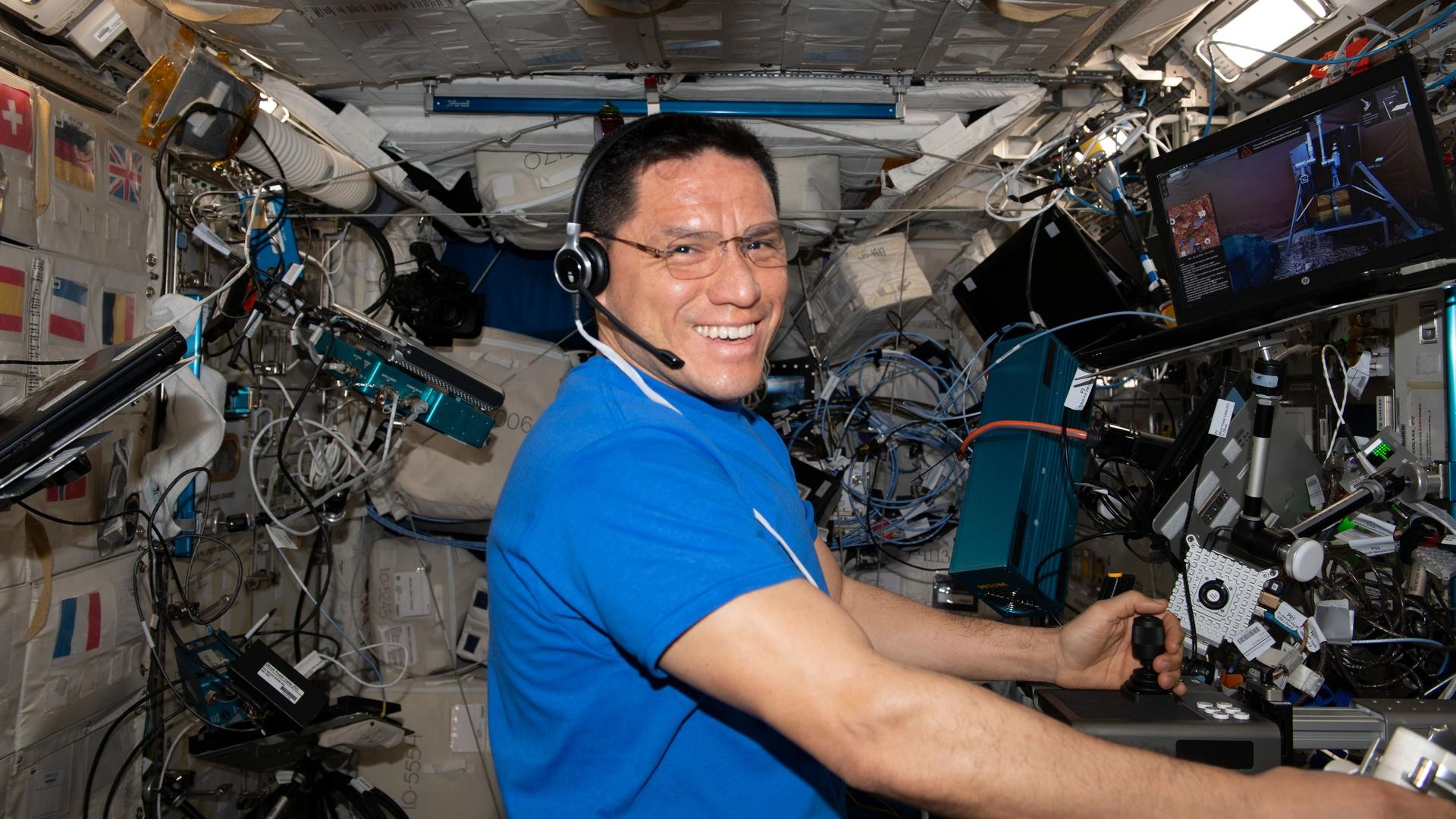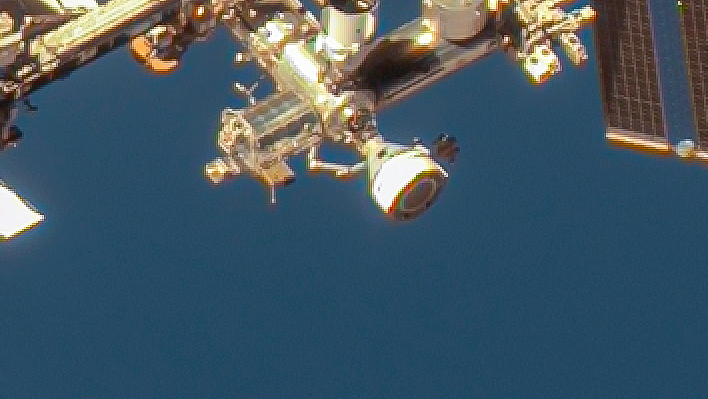Boeing’s Starliner astronauts speak publicly today for 1st time in 2 months: Watch it live
Their mission was extended from about 10 days to 8 months.

Boeing Starliner's first astronaut crew will speak from orbit today (Sept. 13) for the first time in two months, a week after their spacecraft left for Earth without them.
NASA astronauts Butch Wilmore and Suni Williams arrived at the International Space Station aboard Starliner on June 6 after an eventful docking; five of the capsule's 28 reaction control system thrusters misbehaved as it chased the ISS down. After months of troubleshooting, NASA said the risk was too great to send Wilmore and Williams home on Starliner as planned; the spacecraft safely and autonomously returned to Earth on Sept. 6.
Wilmore and Williams will speak to reporters today in a livestream at 2:15 p.m. EDT (1815 GMT) about their overall experience and what they have been doing on the ISS since. You can watch the event on Space.com, via NASA+ (formerly NASA Television), to see how they are dealing with an expected 10-day mission being extended to at least eight months.
Williams and Wilmore are U.S. Navy test pilots well-used to the unexpected. Their Starliner mission, called Crew Flight Test (CFT), was a development effort that always had wiggle room in the timeline; furthermore, NASA had stored extra supplies aboard the ISS in case of the mission being extended.
The astronauts will be returning home with the two astronauts of SpaceX's Crew-9 mission in February 2025 and integrating into the ISS Expeditions 71 and 72 long-duration crews in the meantime. That change represents a shift in Wilmore's and Williams' expectations for their space stay: they were scheduled for a few days on a test mission, and are now part of an ISS crew instead.
Related: Astronauts would have been fine on Boeing's Starliner during landing, NASA says

You can build your own Boeing Starliner space capsule with this Metal Earth Boeing CST-100 Starliner 3D Metal Model Kit, available for $10.95 at Amazon.
Normally, the ISS coalition holds change-of-command ceremonies in space when one crew departs and when another mission begins. But when space missions change or lengthen unexpectedly, NASA usually doesn't hold ceremonies open for public viewing. (Astronauts may do so informally, however.)
Breaking space news, the latest updates on rocket launches, skywatching events and more!
It appears that the former CFT astronauts have been reflecting on what comes next. In a space-to-ground conversation on Sept. 4, Williams shared her feelings on getting the Starliner capsule, named Calypso, ready to fly back to Earth without astronauts. Her job that day included putting mass simulators in the seats to make sure the center of gravity would not be thrown off during landing activities.
"It's sort of — of course — bittersweet to be packing up Starliner and putting out simulators in our seats," Williams said. "But, you know, we want to do the best we can to make sure she's in good shape."
Big mission changes like this have happened before: NASA astronaut Frank Rubio and two Russian cosmonauts were eventually told they would be in space 12 months instead of six after their Russian Soyuz spacecraft sprang a coolant leak in December 2022, requiring a new Soyuz to be shipped to space, for example.
Related: NASA astronaut Frank Rubio surprised by his accidental record in space (video)
Other examples include an ISS crew who had to stay on board the complex longer than expected in 2003 after the fatal space shuttle Columbia accident, for example, or the Apollo 13 astronauts, who lost their chance of a moon landing in 1970 after a burst oxygen tank afflicted their spacecraft.
Rituals like the change-of-command ceremony on the ISS, which borrows from that of the U.S. Navy, are representative of something that people engage in more generally over "transitions that humans don't have control over," Deana Weibel, a cultural anthropologist at Grand Valley State University in Michigan who studies the intersection of religion and outer space, told Space.com.
"Children are born, people reproduce, members of the community die. When we use rituals to mark these transitions — like baptisms, weddings and funerals — we are, at some level, claiming to have control over them and, in a very real way, giving them permission to occur."
Rituals in space may not happen in the formal sense when less predictable changes occur, she mentioned.
And something is lost in such situations; during the early stages of the COVID-19 pandemic, for instance, events such as funerals and weddings shifted online for necessary safety reasons. The peer-reviewed anthropology literature suggests that there was less of a feeling of closure among ritual participants when the ceremonies took place without others present, Weibel said.
As excellently prepared as Williams and Wilmore are for a long mission, Weibel said, their move from Starliner to an ISS crew puts them in a "liminal period" where they are undergoing a transition.
"Both Starliner astronauts have been on plenty of ISS missions before," she noted, but "their identity is different this time, having started as crewmembers on the Starliner. They are considered part of the expedition crew now, but they will always have been the Starliner crewmembers."
While their identities will undergo a shift, the Starliner astronauts' transformation may help them be uniquely identified by history, Weibel said. She likened their situation to that of Sergei Krikalev, the cosmonaut who waited a few extra months on the Mir space station after the Soviet Union broke apart in December 1991. (The new Russia needed to negotiate access to the former Soviet landing area, which was in the freshly independent Kazakhstan.)
"He was not an ordinary cosmonaut, but instead the 'last Soviet citizen,' with his identity forever connecting the past and present, serving as a doorway between them," Weibel said. "These kinds of events don't repeat rituals. They create new stories and new understandings, demonstrating periods where everything changed."

Elizabeth Howell (she/her), Ph.D., was a staff writer in the spaceflight channel between 2022 and 2024 specializing in Canadian space news. She was contributing writer for Space.com for 10 years from 2012 to 2024. Elizabeth's reporting includes multiple exclusives with the White House, leading world coverage about a lost-and-found space tomato on the International Space Station, witnessing five human spaceflight launches on two continents, flying parabolic, working inside a spacesuit, and participating in a simulated Mars mission. Her latest book, "Why Am I Taller?" (ECW Press, 2022) is co-written with astronaut Dave Williams.




